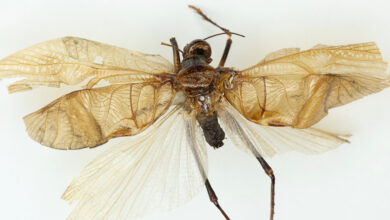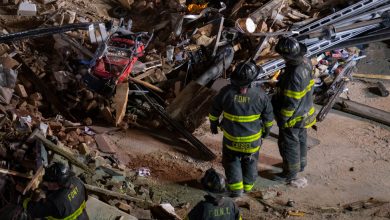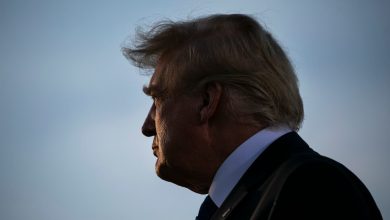French Authorities Seize Oligarch’s Painting Before It Leaves for Russia


Pyotr Konchalovsky’s “Self-Portait” (1912) “will remain in France as long as its owner, a Russian oligarch, remains subject to an asset freeze,” a French government spokesman said.Credit…Succession Kontchalovski Piotr
A painting owned by a Russian oligarch that was seen by over 1.2 million people who visited a blockbuster art show in Paris will not be returning to Russia for the foreseeable future, a spokesman for France’s culture ministry said on Monday.
The 1912 artwork, “Self-Portrait,” by the Russian avant-garde painter Pyotr Konchalovsky, is owned by Petr Aven, a director of one of Russia’s largest banks. After Russia invaded Ukraine in February, Mr. Aven became one of the first Russian businessmen to fall under European Union sanctions.
A spokesman for France’s culture ministry said in an email that the painting, whose seizure was first reported by French newspapers on Saturday, “will remain in France as long as its owner, a Russian oligarch, remains subject to an asset freeze.” Another painting — “Portrait of Timofei Savvich Morozov” (1891), by Valentin Serov — may also not be kept in France because it is also connected to an oligarch, the ministry said.
The Serov painting is owned by the Museum of Avant‑Garde Mastery, the name for a collection of artworks belonging to Viatcheslav Moshe Kantor. Mr. Kantor is the largest shareholder of a Russian fertilizer company and is subject to European and British sanctions.
The spokesman declined to say where the works were being held, “for obvious security reasons.”
Until Apr. 3, the two paintings had been on display at the Louis Vuitton Foundation in Paris as part of “The Morozov Collection: Icons of Modern Art,” a huge exhibition of works that once belonged to the Russian textile magnates Ivan and Mikhail Morozov. Their collection, which includes works by Gauguin, Van Gogh and Picasso, was expropriated about a century ago, after the October Revolution, and became state property.
Most of the paintings in the show came from Russian state museums, including the State Hermitage Museum, in St. Petersburg, and the Pushkin State Museum of Fine Arts, in Moscow. Under a 1994 French law designed to encourage international art loans, those works cannot be seized by French authorities, because they were lent by a foreign government, said Freda Matassa, an art consultant who has helped develop a similar anti-seizure law in Britain.
But, Ms. Matassa said, the French law does not apply to works owned by private individuals.
Representatives of Mr. Aven and the Museum of Avant-Garde Mastery did not respond to requests for comment. A spokeswoman for the Louis Vuitton Foundation said it would not comment, either.
Even before the seizures, some art shipment firms expected “Morozov Collection” works to experience difficulties returning to Russia, because the war in Ukraine has interrupted traditional routes for air and road freight. The most direct route into Russia from Western Europe is now via Finland, yet last week, Finnish customs officials impounded three shipments of fine art at the border between the two countries, suspecting that the cargo breached European Union sanctions. The works were swiftly released when it became apparent they fell outside the sanctions’ scope.
The French culture ministry said it was also keeping a third painting from “The Morozov Collection” in Paris for safety reasons. That work, “Portrait of Margarita Kirillovna Morozova” (1910), by Serov, belongs to the Dnipropetrovsk Art Museum, in the eastern Ukraine city of Dnipro, which is expected to soon be the subject of a Russian assault. Ukrainian authorities requested the painting remain in Paris until it is safe for it to be returned, the culture ministry spokesman said.
The seizure of the Konchalovsky painting is not the first time Mr. Aven’s connections to the art world have made news since Russia’s invasion began. Just days after the war started, Mr. Aven stepped down as a trustee at the Royal Academy of Arts in London, one of the city’s oldest art museums. The academy also announced it would be returning the money he paid to sponsor a major exhibition of Francis Bacon paintings.
Mr. Aven told the Financial Times last month that the sanctions against him were without merit. “If the court decides you are corrupt, there is dirty money, absolutely understandable,” he said. “But this, I just don’t understand.”





